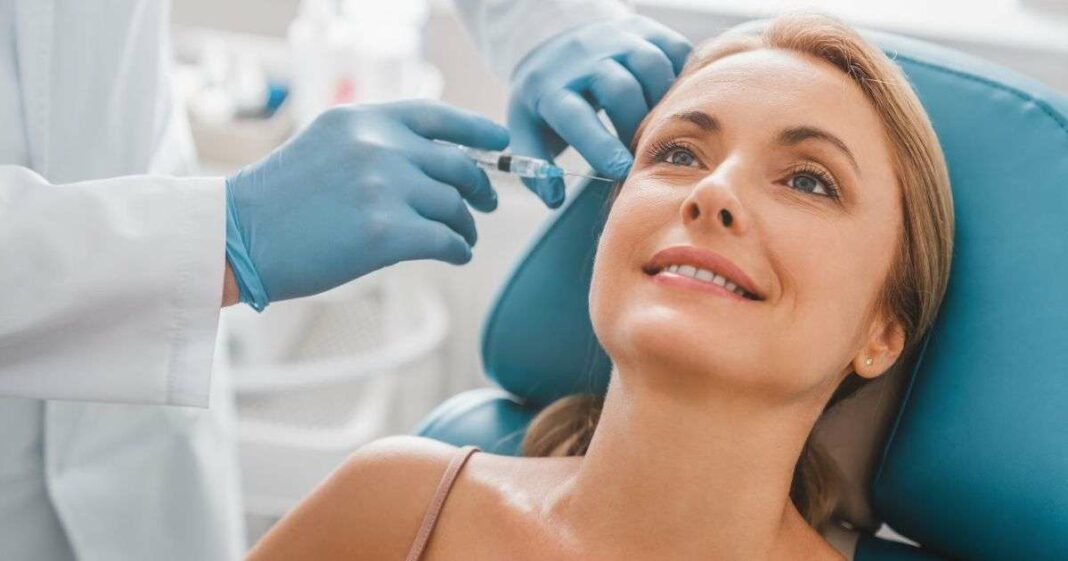The article discusses the growing popularity of polylactic acid (PLA) injections as an alternative to hyaluronic acid for skin rejuvenation. Dr. Alexandre Koutsomanis explains the differences between the two, highlighting that PLA promotes collagen production for improved skin texture and elasticity, while hyaluronic acid acts as a filler. PLA is suitable for various areas, including hands and buttocks, offering gradual and long-lasting results. The article also notes the costs and potential side effects associated with PLA treatments.
In recent years, while hyaluronic acid and botox have gained popularity, another innovative aesthetic treatment is making waves: polylactic acid injections. These injections are used primarily for skin rejuvenation, and they can also be applied to areas like the hands and buttocks. So, how do they differ from hyaluronic acid injections?
To shed light on this exciting trend, we spoke with Dr. Alexandre Koutsomanis, a plastic surgeon based in Paris. He shared insights on the skin-enhancing results, costs, and everything you need to know about these intriguing injections.
What Sets Polylactic Acid Apart from Hyaluronic Acid?
Both polylactic acid and hyaluronic acid injections aim to enhance the skin’s appearance but have distinct functions. Hyaluronic acid is known for being an effective filler, mainly used to plump the skin and minimize the visibility of wrinkles. In contrast, polylactic acid operates as a tissue stimulator. According to Dr. Koutsomanis, “This product is injected into the subcutaneous layer using a fine cannula, targeting the face, neck, or décolleté. Its primary purpose is to encourage skin tissue regeneration by enhancing collagen production“. The goal is to improve skin quality, elasticity, and radiance.
Dr. Koutsomanis notes, “Polylactic acid injections are particularly beneficial for older skin showing some wrinkles, as well as for younger patients seeking a healthy glow.” It’s often recommended to pair these injections with a marine collagen boost for optimal results. However, “unlike hyaluronic acid, the effects of polylactic acid are not immediate: you’ll need to wait between three to six months“ to see the full impact. The cost varies based on the treatment area, starting at around 500 euros per session.
Rejuvenating Hands and Buttocks with Polylactic Acid Injections
Polylactic acid (PLA) injections are gaining traction for their effectiveness in restoring volume and rejuvenation in hands and buttocks. Derived from natural sources, PLA stimulates collagen production, an essential protein for maintaining skin firmness and elasticity. For hands, these injections help diminish the appearance of prominent veins and bones, common signs of aging. By restoring lost volume, PLA provides a smoother, more youthful hand appearance. As the results unfold gradually, it may take a few months for collagen production to stabilize and achieve a natural look. The aesthetic results can last between two to three years, depending on the treated area and amount injected.
In terms of buttock enhancement, polylactic acid presents a non-surgical approach to improving contour and volume. Instead of delivering immediate results like traditional fillers, PLA promotes collagen generation for a natural firming effect. This method yields a lifting effect, alleviating signs of sagging skin and irregularities. Full results become visible after several months and are praised for their durability and natural appearance. Like any aesthetic procedure, PLA injections do come with some risks, including temporary redness, swelling, or mild pain, all of which are typically well tolerated.
Special thanks to Dr. Alexandre Koutsomanis, a cosmetic surgeon in Paris.
